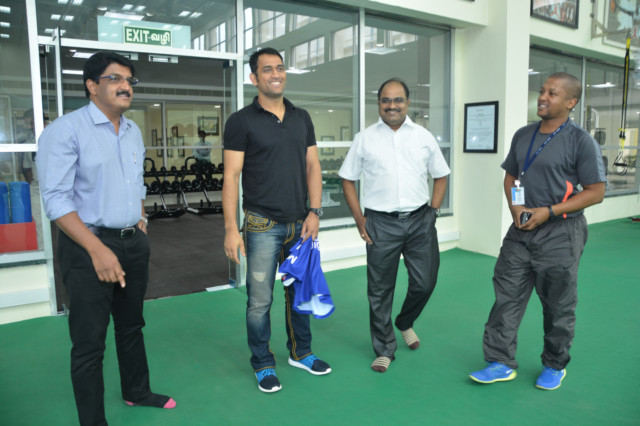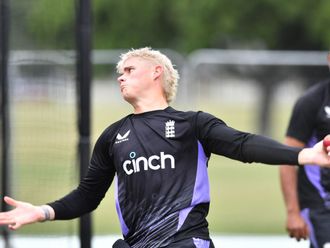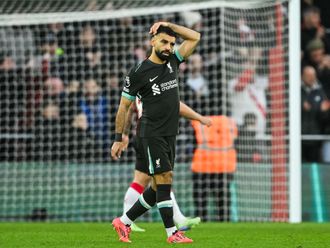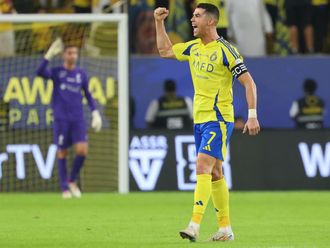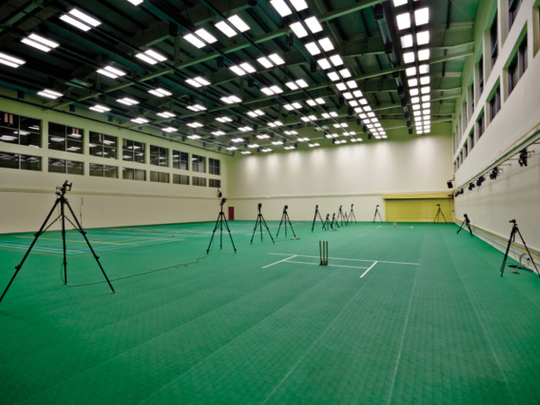
Dubai
The year 2014 is sure to go down in cricket history as the most prolific in terms of the number of bowlers being banned for suspect actions. Just between the months of July and October alone, no less than five international cricketers - Sachithra Senanayake (Sri Lanka), Kane Williamson (New Zealand), Saeed Ajmal (Pakistan), Prosper Utseya (Zimbabwe) and Sohag Gazi (Bangladesh) - were reported to the International Cricket Council (ICC) because of official concerns about their bowling actions and subsequently sanctioned. And while no Indian bowler in recent times has come under the ICC scanner since Harbhajan Singh was reported and cleared back in 2005, major efforts are being taken to ensure that bowlers bowl within the legal limits.
One such endeavour has resulted in India’s ICC-accredited testing centre for suspect actions at Sri Ramachandra University in Chennai which is all set to boost cricketing standards through scientific research on the game. The Sri Ramachandra Arthroscopy and Sports Science Centre (SRASSC) is the second such centre in the world to get an approval from ICC for testing bowlers following the centre in Brisbane, Australia.
Equipped with modern facilities and expertise, it is the first of its kind in India and its mission is to enhance the performance of not only cricketers but also sportspersons from other disciplines. The Board of Control for Cricket in India’s (BCCI) National Cricket Academy (NCA) rehab centre has also been relocated to this university from the NCA in Bangalore.
Over the years, the science of sport has gained huge impetus and is now coveting international attention. Dr. Alwar Thiagarajan, the Chief Operating Officer in charge of sports science services, who was recently in Dubai for talks with the ICC and Emirates Cricket Board officials, talked to Gulf News on the novel research that is being conducted at the centre apart from testing bowlers with suspect action with the most modern equipments.
Science of sport
“The idea of sports as a science took shape when Dr S. Arumugam who is the Head of the Department and is an Orthopedics surgeon, travelled around the world and watched top sports facilities and sports specialisation and wanted to establish something similar in India,” Thiagarajan said.
“Our chancellor V. R. Venkataachalam is an avid cricket lover and our founder NPV Ramaswamy Udayar, also a sports lover, backed the initiative. We consulted with people in the UK and US and also struck up a nice relationship with the University of Cape Town, South Africa. Professor Timothy Noakes, a world renowned sports scientist became our mentor. He appreciated our ideas and through his guidance we got the right contacts and established the centre.”
Bowlers from around the world are now being flown in to SRASSC. Elaborating on the centre’s work, Thiagarajan said: “The ICC has given all the directions and protocols as to when a player should be tested and with what equipment. We have the best of equipment for it. Previously we used to test with infra-red cameras and we have almost 20 of them when actually only 10 to 12 are needed.
“The bowler will be monitored by 10 to 12 3-D cameras and sometimes even 16 cameras using infra-red technology along with two high-speed video cameras. This action is captured through reflective markers and this creates a picture of the bowler with all the angles and lines and essentially the skeletal structure is reconstituted in a stick figure.
“Vicon, who are leaders in image motion capture technology, have come out with a software. Incidentally, the ICC has also released a documentary on how the testing is done and it was shot at our centre.”
Error reduced
Thiagarajan also revealed how modern machines have helped testing accuracy.
“It is now called clusters instead of the process of sticking the markers directly,” he said. “We have plastic sheets now and we stick many more stickers on that, so that the accuracy is better. The error due to skin movement has been reduced and hence it is much more reliable and accurate. The ICC has done a lot of research with their scientists and is trying to develop a foolproof system of testing bowlers’ action so that umpires can hereafter confidently deal with this issue.”
Preparations as a testing centre began very early and Thiagarajan said: “Before we did the first ICC testing, we had, as an experiment, tested almost 50 bowlers from our university. State and national bowlers were also tested.
“We have perfected the process and our first report was on Bangladesh bowler Al Amin Hossain whose bowling action has since been cleared.”
Besides correcting bowlers’ actions, SRASSC also doubles up as a cricketing centre of excellence.
“We all know cricket is a game of skill and like football, which has improved through scientific training. We want cricket too to benefit. Bio-mechanics is not only for chucking issues, but it can prevent injuries by assessing a bowler’s action.
Even fast bowlers’ careers can be prolonged and performance enhancement done. For example, if somebody wants his bowling speed to improve, we can analyse the action and provide the scientific inputs to the coach as to which movement pattern will be ideal,” he said.
“Our four research papers will be presented at the cricket science congress during the semi-final of the World Cup in Sydney on March 26, 2015. It is a three-day conference and our papers have been accepted. We are going to present papers on how we do bio mechanic testing on cricketers and we are going to tell the world about our experience. Three of us will be presenting the papers.”


